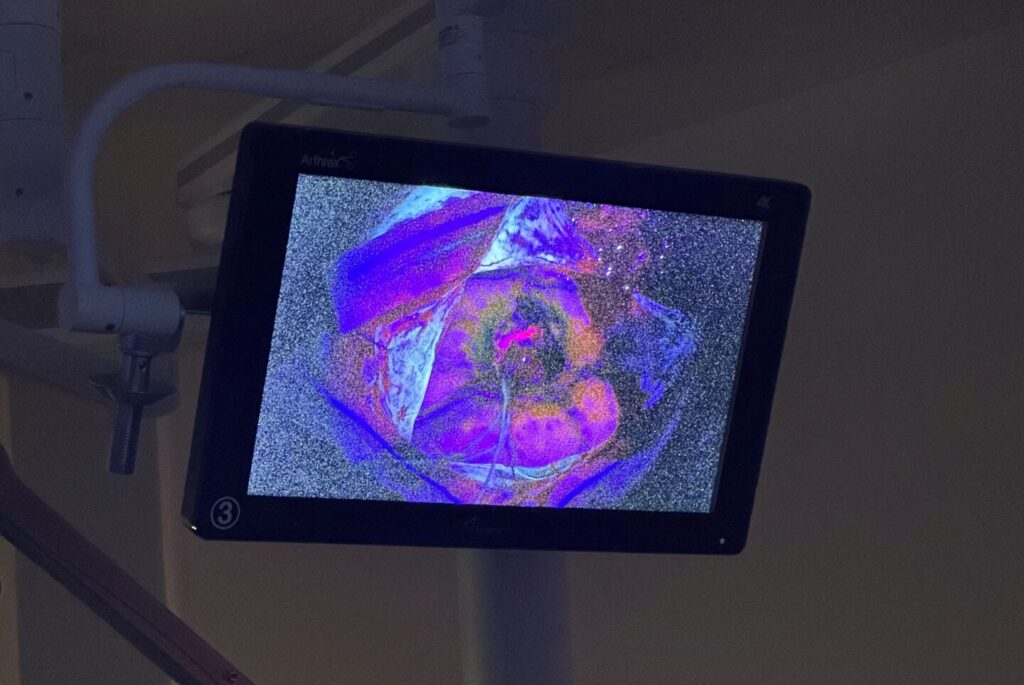
Did you know that behind the doors of Royal Inland Hospital’s (RIH) operating rooms, an extraordinary advancement in brain surgery is transforming how tumors are removed? Neurosurgeons at RIH are now using Gleolan (5-ALA), a cutting-edge product that’s making brain tumor surgeries more accurate and safer for patients.
Gleolan is an oral solution taken by patients before surgery that has a unique ability to bind to the malignant *glioma cells, causing them to light up in fluorescent colors when viewed under a special blue light in the operating room. This fluorescence-guided surgery (FGS) technique allows surgeons to visualize and remove tumor cells with unprecedented accuracy.
Even with the best technology, brain surgery remains a delicate and challenging task. Traditionally, surgeons rely on preoperative magnetic resonance imaging (MRI) scans and white light, using a sophisticated navigation system to guide them during the procedure. Some tumors have well circumscribed margins with a clear interface between tumor and brain. Other tumors, gliomas in particular, have more diffuse borders as these tumors tend to infiltrate the surrounding healthy brain tissue making a complete resection more difficult and sometimes impossible.
This is where Gleolan is making a difference. By highlighting tumor cells in real-time during surgery, Gleolan helps surgeons distinguish tumor tissue from healthy brain tissue, ensuring that more of the tumor is removed while sparing as much healthy brain as possible. The result is a more complete resection of the tumor, which improves patient’s prognosis and prolongs their survival.
“We are thrilled to bring this technology to RIH. It is already being used in several centres across the country and is a valuable tool in glioma surgery. For our first patient, we had a preceptor join us from another centre to ensure that we were maximizing our use of this technology. Our first case gave us valuable insight into which patients would benefit from this technology and it appears to be a clear subset of patients with brain tumors – those with malignant gliomas.” – Dr. Reena Baweja, Neurosurgeon at Royal Inland Hospital
Fluorescence-guided surgery represents a significant leap forward in neurosurgery, offering patients at RIH the best possible outcome. So far, two successful procedures of this type have been completed. By integrating this advanced technology into their surgical practice, RIH neurosurgeons are improving the precision of brain tumor removal while enhancing the safety of the procedure. As Gleolan continues to illuminate the path for neurosurgeons, the future of brain tumor surgery looks brighter than ever.
*Glioma: Gliomas are a diverse group of tumors originating from glial cells in the brain and spinal cord, representing the most common primary brain tumor within the central nervous system.

